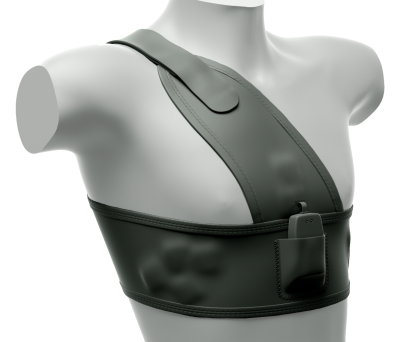How long before your competent? doctor gets this prescribed for you?
Smart clothing maker Nanowear collects FDA AI clearance for cuffless blood pressure monitoring
The maker of a wearable garment for tracking heart rate, breathing and physical activity has obtained an FDA clearance for artificial intelligence-powered software that enables continuous monitoring of blood pressure without an inflatable cuff.
Fit snugly across a person’s chest, Nanowear’s SimpleSense wearable is built with cloth-based sensor technology to provide medical-grade remote vital sign tracking, including ECG data and heart sounds.
The new 510(k) green light—marking the company’s fourth—for the SimpleSense-BP program aims to support the at-home diagnosis of hypertension, as well as within healthcare facilities or clinical studies. Everyday settings can lead to more accurate readings than under the examination of a physician, where anxiety may raise blood pressure levels while calm, controlled breathing may lower them.

“This FDA clearance represents an exciting and differentiating moment for Nanowear,” co-founder and CEO Venk Varadan said in a statement. “Accelerated by the pandemic, the market has been eagerly searching for reliable, clinical-grade wearable, and data service solutions that find product market fit with the following three attributes: at-home, utilizing AI, and a proven team that executes.”
According to the company, SimpleSense-BP has been validated to log changes of more than 15 mmHg systolic and 10 mmHg diastolic blood pressures over a continuous recording period.
No comments:
Post a Comment